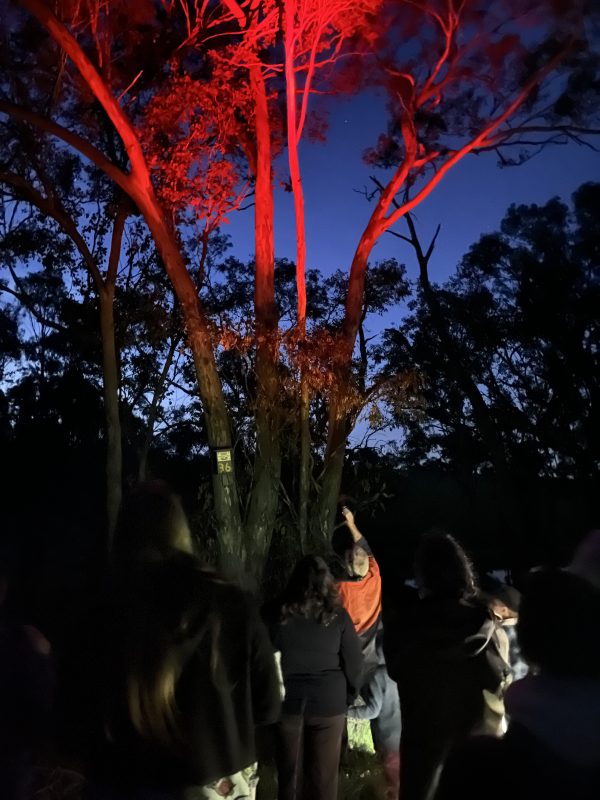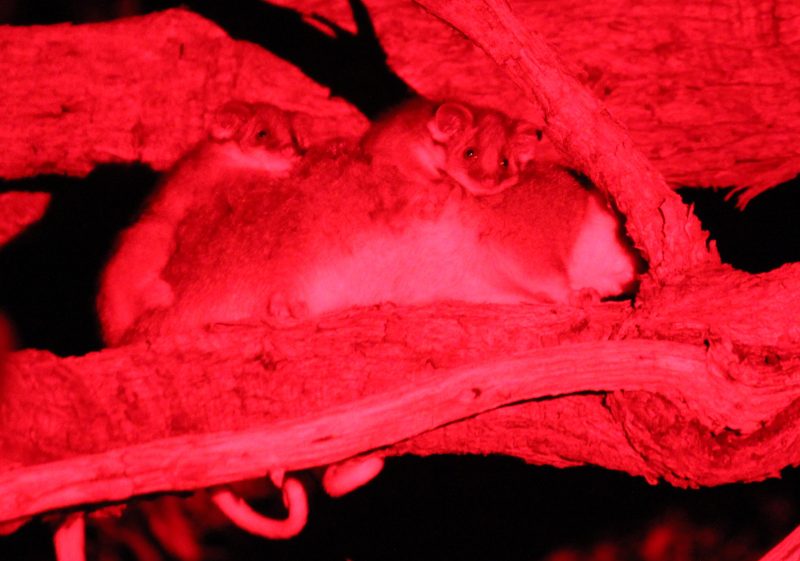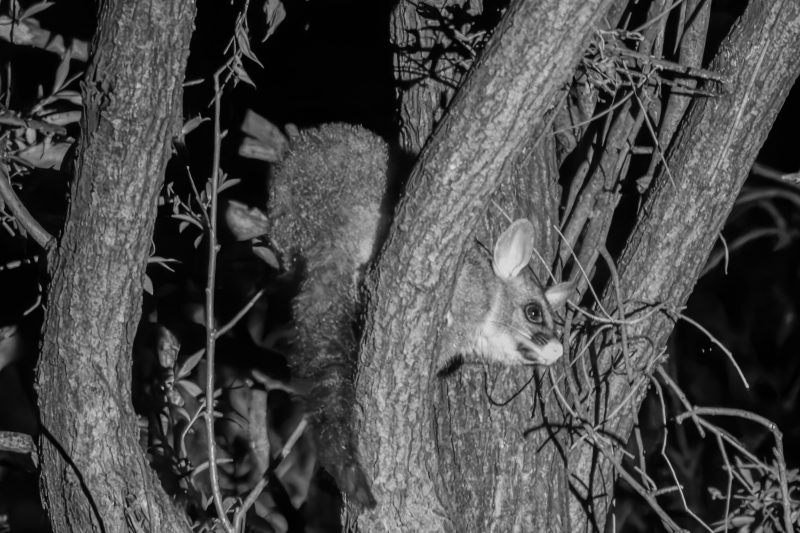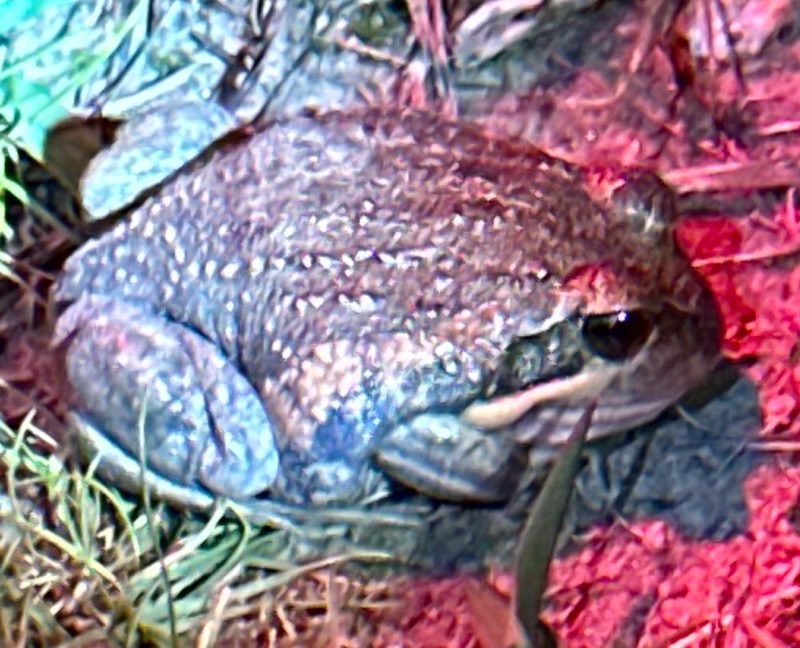Once again our spotlighting walks with Parklands’ Ranger Dan and Karen Retra from Wodonga Urban Landcare Network were a popular activity during the spring school holidays. Thankfully the weather stayed fine and the critters were out and about.
While spotlighting is a great way to see some of our more cryptic animals, it’s important to note that we do try to minimise disturbance to the animals by using a red light. This colour light doesn’t harm the animals’ eyes and it also preserves our ‘night vision’ making it easier to find our way around and spot things of interest.

At Drapers Reserve, some squirrel gliders were seen scurrying about in the treetops along with some possums including a common ringtail (Pseudocheirus peregrinus) mother with not one, but two babies on her back! Ringtail possums are less abundant than common brushtail possums (Trichosurus vulpecula) but both are arboreal with prehensile tails and eat a variety of leaves of both native and introduced species. Ringtails tend to live in groups and build communal nests, or dreys, from tree branches but will also use tree hollows. More ringtails were seen at Waterworks Regional Park as well as a brushtail or two.


Much to Ranger Dan’s dismay (what’s the word for a fear of frogs….?!), around 15 ‘pobblebonk’ or eastern banjo frogs (Lymnodynastes dumerilii) were spotted along the tracks at Stringybark Conservation Reserve. You’ve probably heard the distinctive call of these frogs, especially after rain in warmer weather, and you might even have some burrowed down in your garden. This burrowing is how they deal with drier conditions, and they have specially adapted shovel-shaped toes on their back feet for this purpose. If you’re interested in listening to some frog calls, the FrogID app is handy and you can even record what you hear and have the species identified by experts at the Australian Museum.







